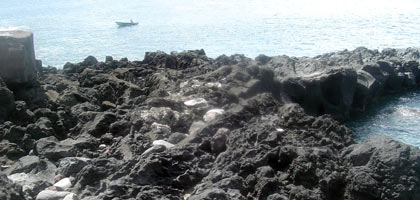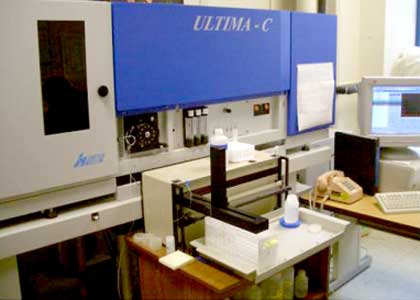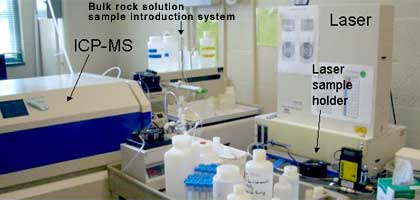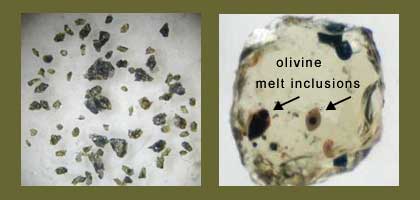

| the expedition | |
| the science | |
| marianas history | |
| daily journal | |
| the team | |
| questions & answers | |
|
the islands Saipan Anatahan Sarigan Guguan Alamagan Pagan Agrigan Asuncion Maug Uracas |
|
|||||||||||||||||||||||||||||||||||||||||||||||||||||||||||||||
Lava Chemistry

We use a number of tools to analyze the chemical composition of the lavas and ash that are sampled from volcanic islands like the Marianas. To analyze bulk rock samples, we first powder each rock and separate the powders into two sets. We melt the first set of rock powders and dissolve it in acid. These samples are run on an instrument known as an inductively coupled plasma atomic emission spectrometer for major elements such as silicon, iron, magnesium, and calcium. The second set of powders are dried and dissolved in other acids. These samples are then analyzed on the inductively coupled plasma mass spectrometer for over 30 trace elements, including barium, strontium and lead, and the rare earth elements like lanthanum. Bulk rock major and trace element analyses give geochemists clues about their magmatic source and help describe what the mantle is like beneath the arc, how much of a contribution the subducted sediment makes to the melt and how processes such as fractionation, the breakdown of a material into components, affect the chemistry of the melt.


We are not only interested in the bulk rock geochemistry, but in crystals called phenocrysts and the bits of magma trapped in them as well. Pieces of the rocks that were not powdered are gently crushed, and phenocrysts such as olivine, pyroxene, and plagioclase are separated out. Grain analyses can tell us about the temperatures, depths and pressures at which the magmas formed, and how the magma evolved from source to eruption. Because melt inclusions can be analyzed using both the mass spectrometer for major and trace elements and the ion probe for volatiles, they are powerful tools for understanding magma generation beneath arcs, since they potentially trap the composition of the earliest melt. Combining bulk rock geochemistry with phenocryst and inclusion analyses helps us to get a more detailed, complete picture of each volcano, as well as the processes that create the entire volcanic arc.

